A speech disorder is when an infant or an adult has problems producing speech sounds. People with delayed speech development may hesitate or even stutter while trying to talk. There isn’t a medical explanation for the occurrence of speech impairments. In TCM, speech disorders can be caused either by a congenital weak constitution, blocked Qi, emotional imbalances, or stress. The treatment with the acupressure points for speech development is aimed at tackling the different pathologic mechanisms that hinder speech and establishing back homeostasis in the systems affected.
What Is A Speech Disorder?
Speech is the way we talk and express our language. It involves the coordination of the tongue together with the other muscles of the mouth and jaw and the vocal cords to produce the specific sounds of language. A speech disorder is the inability to speak or difficulty speaking in a fluid manner. People who have speech disorders often stutter and have unclear diction.
- Apraxia of Speech
- Autism
- Specific Language Impairment
Like other speech and language impairments, the cause of SLI is unknown, but recent studies have found that it is likely genetic. People with Specific language impairment usually have relatives with the same condition.
Does Acupuncture Cure Speech Delay?

As mentioned before in this post, the causes of speech disorders are still unknown among scientists. However, since acupuncture comes from the Chinese tradition, it has been utilized for a long time in the treatment of speech and language impairments. Nowadays, there are scientific data endorsing the use of acupuncture in the treatment of language impairments for autism and acupuncture for aphasia.
A clinical trial involving 20 autistic children has shown the efficacy of acupuncture in addition to language therapy compared with language therapy alone. The result of this study was that scalp acupuncture points for speech, together with regular acupuncture points for speech problems and language therapy, were significantly positive.
Another controlled clinical trial conducted on eighty patients with post-stroke speech disorder over twenty-one days of treatment with both acupuncture points for speech problems as well as psychological intervention showed a considerable advantage of acupuncture for stroke in the speech impaired.
Can Acupuncture Help Stuttering?
Stuttering is normal in toddlers from two to three years old. It’s when one knows what they want to say but has difficulty pronouncing it. The cause of stuttering is still unknown, but it is believed to be partly due to mental factors. The acupuncture points for speech disorders are effective for stuttering since they balance the mind, particularly PC-8, LI-4, and GV-20.
These specific acupoints in synergy are useful in acupuncture for an elevator speech, for instance. In this case, the treatment would be aimed at improving one’s communication skills, but since these acupoints from the Pericardium, Large Intestine, and Du Mai channels have a big sphere of influence, they can become an ally for those trying to excel in their professional position.
What Are The Acupressure Points For Speech Impairment?
The acupressure points for speech development follow the criteria of both traditional Chinese medicine diagnosis as well as the results shown by scientific research on the acupressure points for speech development. The research results endorse the use of traditional acupuncture as well as scalp acupuncture in the speech area for the treatment of speech disorders.
No matter what the underlying cause is hindering speech, these acupressure points for speech development can be utilized either as a stand-alone treatment in case you don’t have access to a professional or as an adjunct therapy. In case you have had a stroke, have a look at this acupuncture pen for stroke patients that you can use at home as well.
Acupoint: PC-8 (Other Names: Pericardium-8/Lao Gong/Palace of Toil)
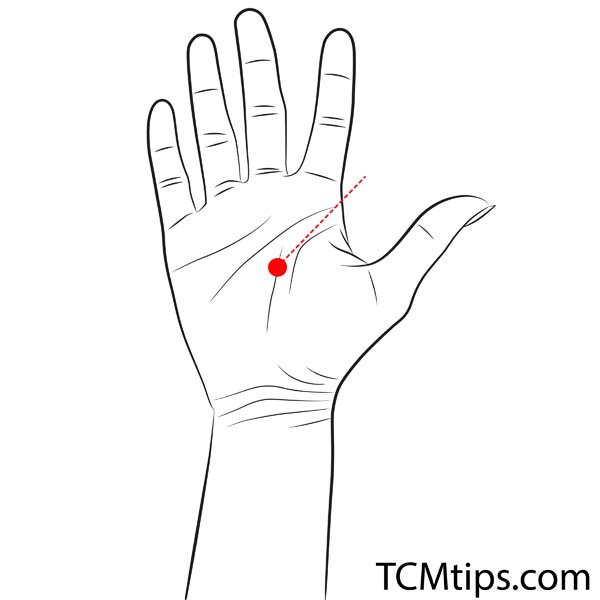
This point is located at the place where the tip of the middle finger touches when making a fist.
PC-8 is considered one of the most powerful points in the whole meridian system. It is a Ying-Spring point, a place where the Qi begins to gain volume and depth and start circulating like water flowing from a fountain. This point has long been used to heal psychic problems such as the inability to express affection as well as hopelessness. It clears the Heart and helps one to have emotional balance, contributing to expression and speech. This is also one of the acupressure points for stomach inflammation.
Massage this acupoint with your thumb for about three minutes, doing circular moments.
Acupoint: LI-4 (Other Names: Large Intestine-4/He Gu/Joining Valley)

If you make a “C” shape with both hands, they should easily interlock. The thumb of one hand should fall onto the area of skin between the thumb and index finger of the other hand, and this space holds the LI-4 point. Due to its location, this acupoint is recommended in acupressure for hand pain.
This acupoint is also known as Hegu. It is one of the most famous and commonly used acupuncture points for its analgesic effect. It’s considered the most important point for symptoms that involve the face, and it affects the thyroid. It’s traditionally utilized to treat hard-drug addiction, being referred to as the “opium point”. Scientific studies indicate that LI-4 promotes the recovery of neurological impairment.
You can massage LI-4 using your thumb. Apply enough pressure so as to feel a little of a sharp sensation typical of this point, oscillating between deep and mild pressure for about three minutes.
The stimulation of LI-4 (Hegu) is counter-indicated for pregnant women as it can induce childbirth.
Acupoint: GV-20 (Other Names: The Governing Vessel-20/Bai Hui/Hundred Convergence)
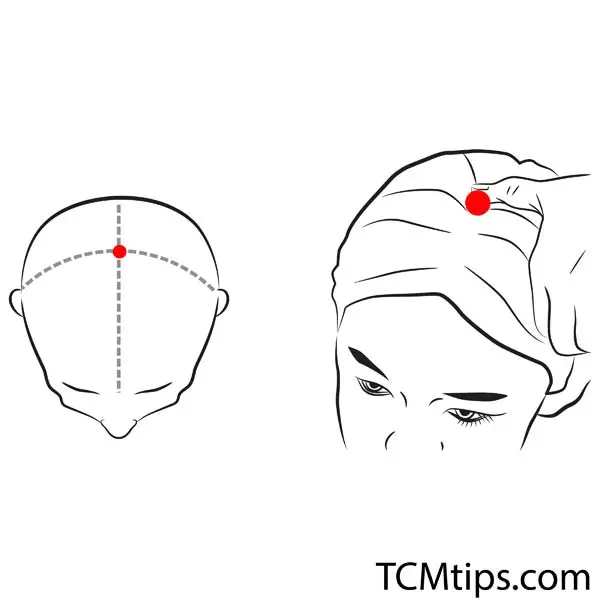
Baihui, as this acupoint is also called, can be found on the midline of the head by drawing a straight line from both ears up.
It’s the traditional command acupoint for all brain-related issues. It’s referred to as the “sea of marrow” in the classical TCM texts in reference to the Brain. Scientific evidence suggests that the stimulation of this acupoint is helpful in cases of major depression, having effects on what scientists call stimulus-independent thought, mind-wandering, and self-consciousness. It is recommended in acupressure for better vision.
Since this is a very potent acupoint to regulate the flow of Qi in the head and sensory organs, and it benefits the brain and the central nervous system, it is one of the recommended acupressure points for speech development.
The acupressure at this point is done by pressing it for a few seconds and releasing intermittently for about three minutes.
Acupoint: GV-15 (Other Names: The Governing Vessel-15/Ya Men/Mutism Gate)
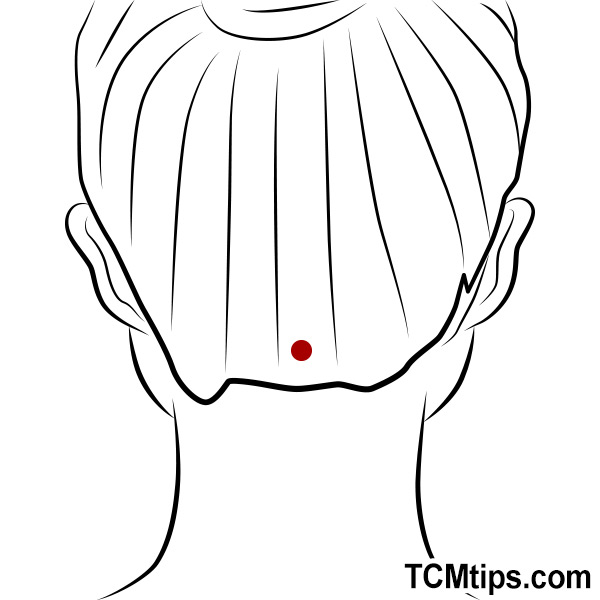
GV-15 can be found between the spinous processes of the first and second cervical vertebrae.
This acupoint is called “Gate of Muteness”. It is used mainly to stimulate speech. It is said to be effective for symptoms of lack of speech, like in aphasia due to its location directly behind the root of the tongue. It moistens the throat, clears the mind, benefits the neck and spine, and clears the senses to stimulate speech.
Massage this acupoint for three minutes, applying a circular motion with your fingers.
Acupoint: HT-7 (Other Names: Heart-7/Shen Men/Spirit Gate)
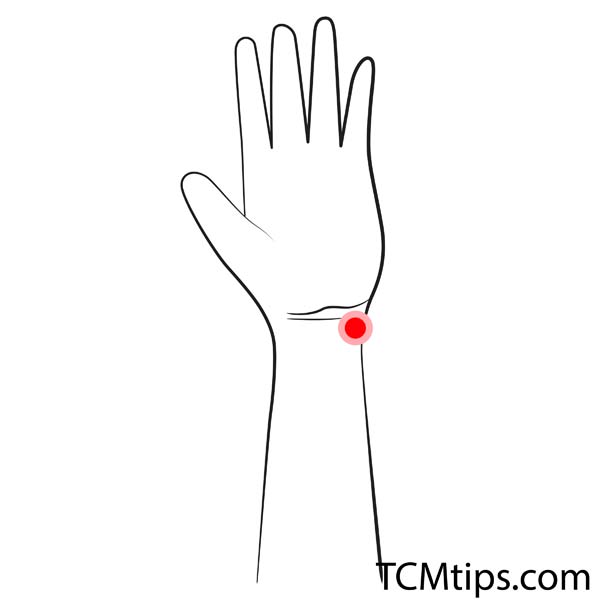
HT-7 Shenmen is found at the wrist joint, on the side of the little finger, in the depression right above the pisiform bone.
Psychogenic aphonia can be improved by relieving stress and stimulating acupoints that calm the mind. HT-7 is the command acupoint to calm the mind and the Spirit, which resides in the Heart. It is one of the acupressure points for heart blockage. Stress often leads to mental illnesses such as depression and neurosis. By stimulating HT-7, the autonomic nervous system of the whole body is adjusted, which leads to the improvement of psychogenic aphonia.
Massage this acupoint using your thumb with mild but firm pressure for about three minutes, three times a day.
Acupoint: PC-6 (Other Names: Pericardium-6/Nei Guan/Inner Pass)
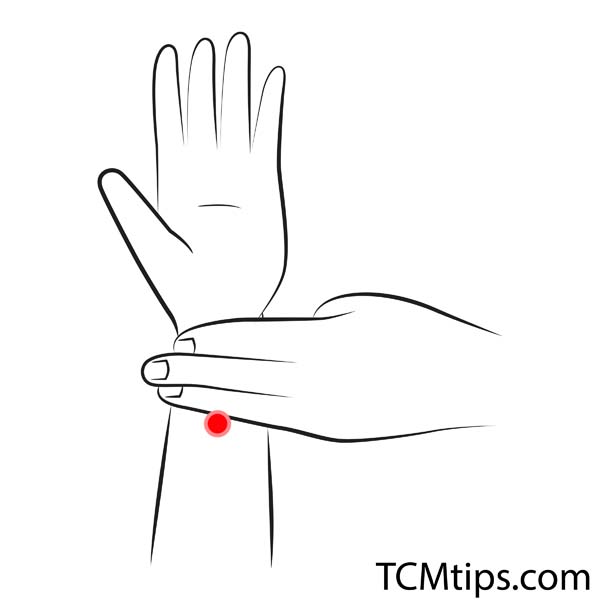
Neiguan can be found on the inside of the wrist. With the palm facing up, it is located between the wrist and the base of the arm, and between the two tendons that continue from the center of the wrist, by moving three fingers of the hand.
This acupoint improves the circulation of blood in the brain. It’s a major point to balance one’s emotional state in general. PC-6 has also been shown to reduce arterial stiffness in hypertensive patients, besides being known to reduce ischemic heart damage, and it also lowers blood pressure and reduces nausea and vomiting. PC-6 is also one of the acupressure points for clogged arteries.
Press the left and right acupressure points for about 10 seconds, releasing them intermittently. You can do this procedure for a duration of about three minutes.
Takeaways
The acupressure points for speech development address the different physio-pathological mechanisms that hinder speech.
- PC-8 acts in the sphere of the emotional heart, balancing strong and heavy emotions that arise as heat in the Heart.
- LI-4 has regulating effects in the thyroid gland, recovering the voice distortions in cases of hyperthyroidism.
- GV-20 stimulates the central nervous system and the flow of Qi in the upper part of the body, bringing strength and quality to the voice.
- GV-15 in the command point for all speech problems due to its location right behind the root of the tongue.
- HT-7 soothes strong emotions and balances the psyche, allowing a clearer state of mind and tranquillity necessary for a clear speech.
- PC-6 opens and regulates the movements of the emotions in the body and the flow of blood in the brain, bringing many physical and mental benefits.

Try our Anti-Aging Gua Sha Tool designed to bring out your skin’s natural glow.
Best Gua Sha Product- Anti-Aging: The tool is designed to target 11 specific aging signs such as wrinkles and sagging skin. By following the 7-step routine, users can improve skin firmness and reduce fine lines naturally.
- Enhances Skincare Routine: It works effectively with serums and lotions, boosting absorption and efficacy of skincare products.
- Visible Skin Improvement: Users can expect a smoother complexion, reduced puffiness, and a more youthful appearance.
 P. Sze
P. Sze 

















